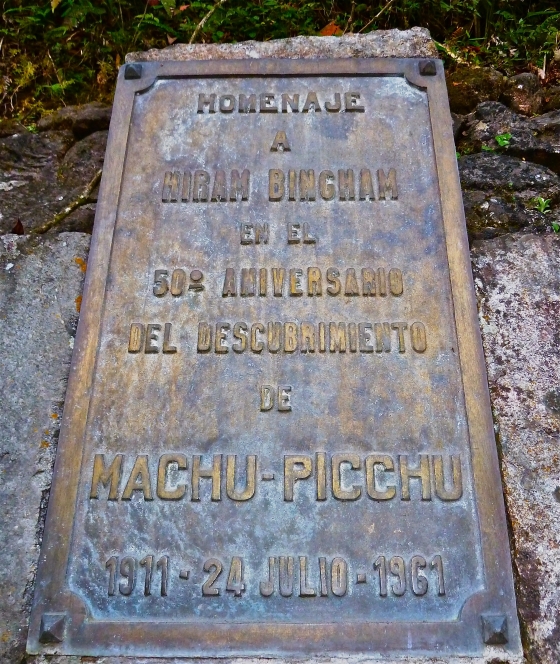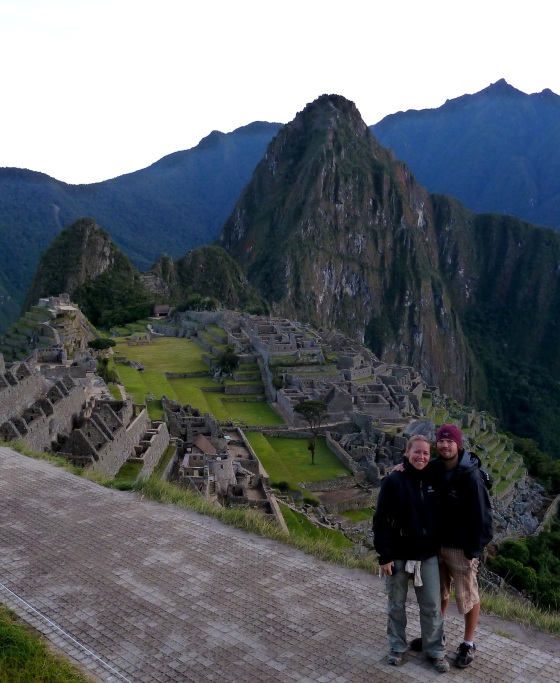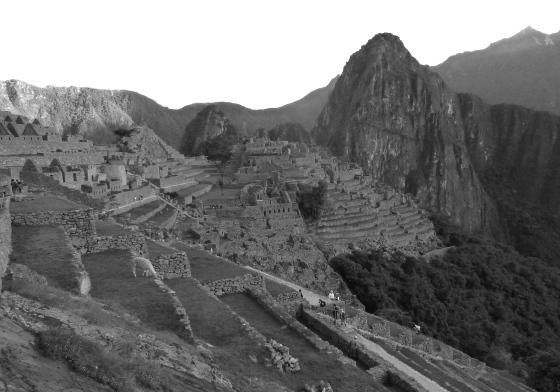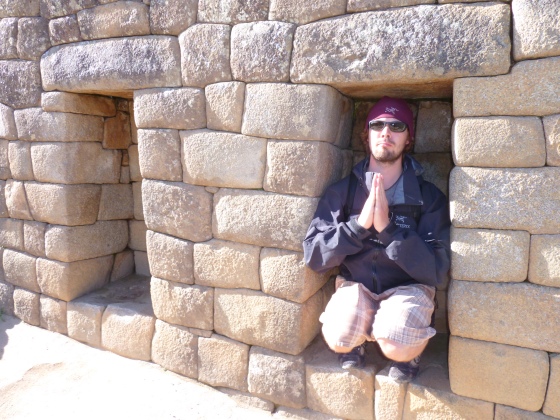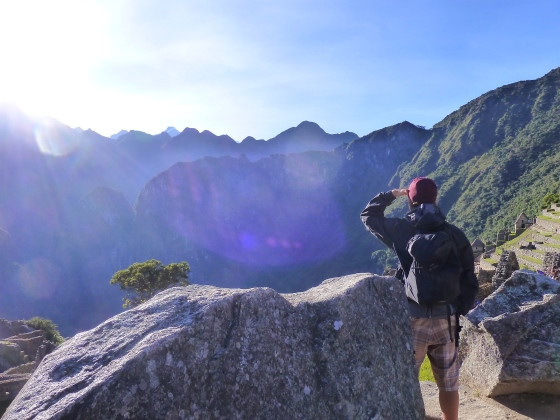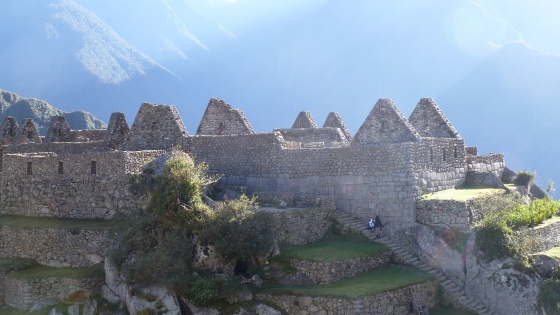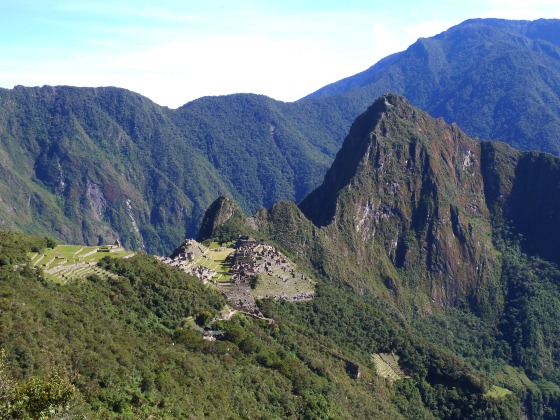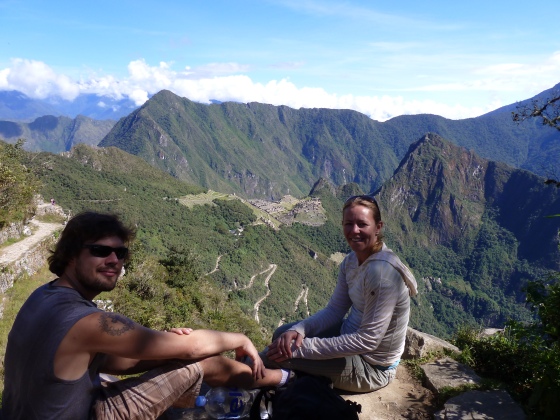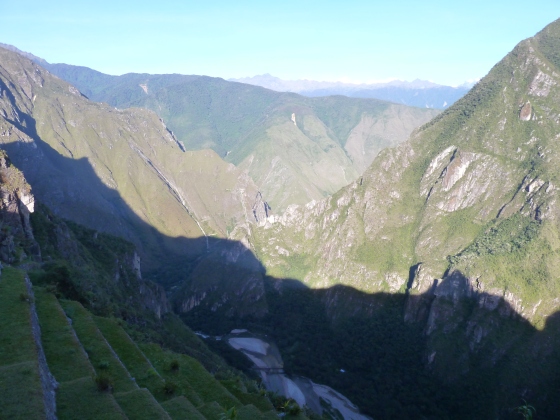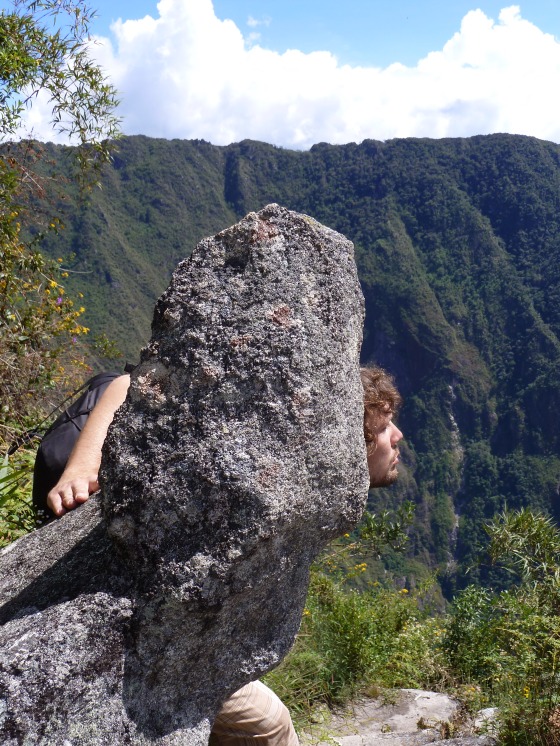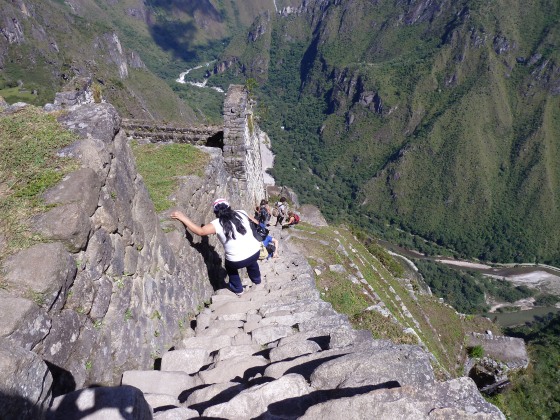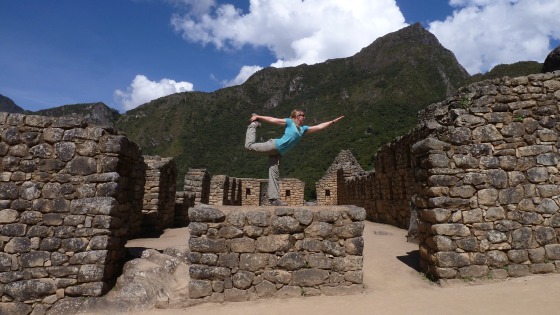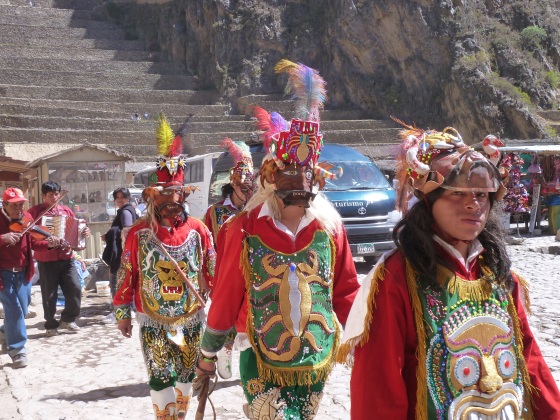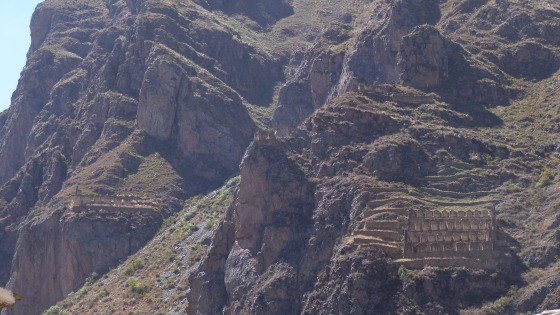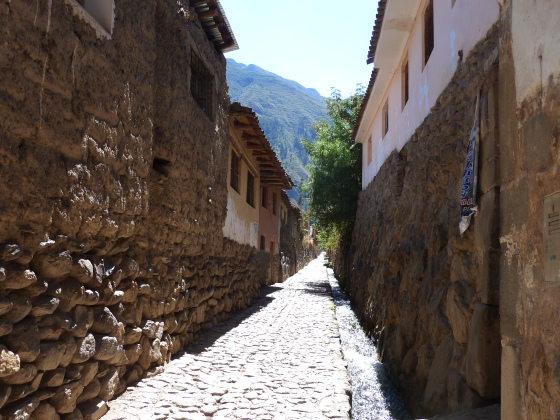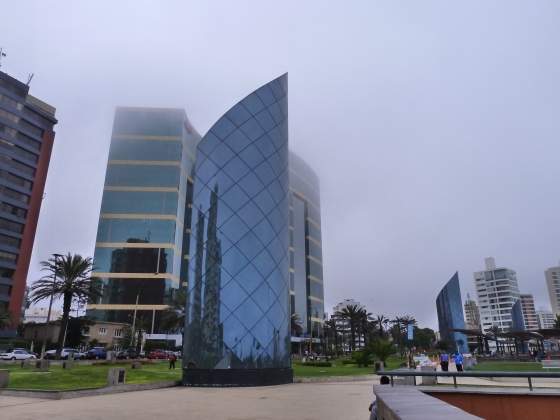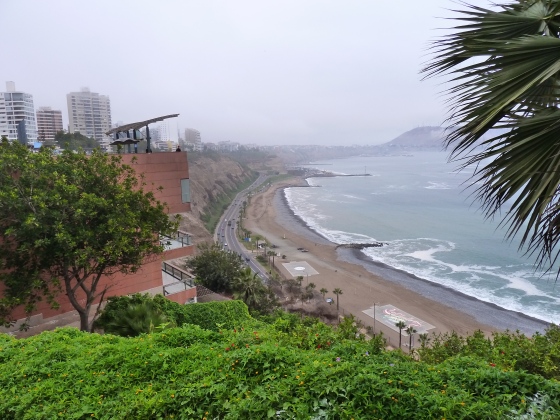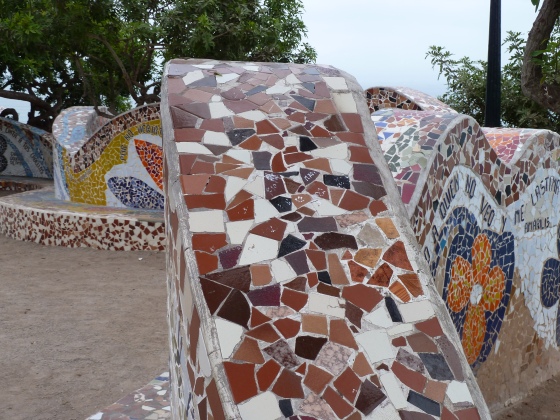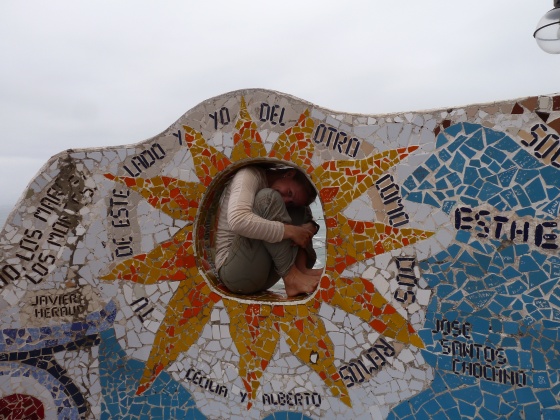Day 5: Machu Picchu (“Old Mountain”)
Despite getting to sleep rather late and the preceding 4 consecutive days of trekking, we were determined to beat the buses to the gate entrance to Machu Picchu that morning. With our necessities for the day set to go in our day pack, we had a quick coffee and joined Chris on foot from town to the bridge connecting us to the trail. Apparently, we weren’t the only ones eager to beat the crowds. We were joined at the trailhead, before 5am, waiting for it to open, with 100 other people. The motivation for hiking up could have been different for every person in that line. For us, it was quadruple-over. One – Money Saver. We saved money by not needing to buy an overpriced bus ticket up ($15 for two of us for a 15 minute ride!); Two – Stomach Sanity. We saved ourselves the potential for nausea from being thrown around in a bus seat as the bus raced around steep hairpins; Three – Health. The hike up was the chance to get in an early morning workout before most people get out of bed. Four – First Entry. Hiking up fast would allow us to beat the masses and be some of the first people in once the gate opens at 6am. Of our Salkantay group of 13 (including our guide), only the 3 of us (Chris, Dale and myself) were brave enough to walk the 5km from town to the trail and climb the 3km footpath. Our plan was, walk up, take the bus down if needed at the end of the day.
We huffed it from the hostel in about 30 minutes to the trailhead, and by this time it was 4:45. Along with everyone else, we had to wait until 5am for the trail to open. We were more than half the crown back. That didn’t stop us. Once our passports and tickets were checked at the trailhead, we snapped on our headlamps and trotted on at a good clip. Fifteen minutes in, after passing at least a quarter of the pack who had a 10 min head-start on us, my 30″ legs just couldn’t move fast enough for the extra stride length carried by Dale and Chris. Much to the displeasure of my ego, I pulled to the side and said “please, go.” The estimated climb time was 60-90 minutes to reach the gate. Although I let them pass, my pace was still vigorous. I flew by what seemed like 50 people. It was challenging. I was having flashbacks of my many hours spent hiking the Grouse Grind, my routine trail in Vancouver, BC. Although the Machu Picchu trail gains half the elevation of the Grind in the same 3km, beginning at 2500m versus 200m above sea level makes all the difference. Finally, after 39 minutes I reached the stairway to the gate. I was only 5th in line. Right behind Dale. Now, all we had to do was put on a layer of clothing over our sweat and wait for the gate to open. The first tour bus arrived at about 5:55, and the hoard of people filled up the cue behind us. We were happy we walked.
We were supposed to wait for the rest of our trekking group in order to have our guided tour of the ruins with everyone. There was no way we were going to wait for hundreds of people to file off of buses, and walk past us into the gate. We entered as soon as it opened. Our first mission was a direct left and another climb up to catch a glimpse of sunrise and an empty Machu Picchu. We knew if we didn’t, by 8am the place would be full. We did just that. The site was exactly how I imagined it, only bigger. Massive. Glorious. Beautiful. Absolutely breathtaking.
After posing for a few shots and really soaking up the view, in silence, with no one around (for the whole minute we had before a flux of people joined us), we set out to find our group. It didn’t take us long and we joined our tour.
We practiced our Spanish listening skills, as the tour was 100% in Spanish, which meant we caught 50% of it plus the translation help from Alexia. After the hour tour, we said good-bye to our guide and continued exploring on our own. From the top of the site, it appears small, but when we got walking around, we really felt it’s size. It takes about 30 minutes to walk from one side to the other.
Because we had booked into the later trail entrance to Wayna Picchu, we decided to see if we could make it all the way to the Sun Gate on the other side of the ruins, where the Inca trail meets Machu Picchu, and back for our starting time. It was a well worth it hour hike over. Again we had to climb, but the trail was much easier than what we had already experienced that morning.
We had time to sit for a few minutes to enjoy the view and have a snack before it was time to head back. More walking. It was only 10:30 and we had been walking almost solid for 6 hours. Regardless that we had sore, tired feet, we were excited for our climb up Wayna Picchu.
Wayna Picchu or “Young Mountain” is the beautiful peak that stands behind the ruins and makes photographs of the area so spectacular. Machu Picchu or “Old Mountain” is a much smaller peak. The ruins were built amidst the protection of these two mountains with steep valleys on either side. Brilliant. To date, we still do not know for sure the purpose of Machu Picchu. Though, there are various guesses made by numerous archeologists and Inca Empire Anthropologists. Some of those speculations include: a Celebration Grounds, a Spiritual gathering place, a fortress, a trading centre and an inhabited Royal Estate. What do you think makes the most sense?
Consider this: Evidence dates the construction of the site beginning as far back as 1400, spanning over 2 Inca rulers to 1493 – that’s nearly 100 years of building a structure that could accommodate 1000 inhabitants. It is estimated that with the copper, natural rock-splitting methods used to make the precise puzzle like bricks, it would have taken 5000 people to work on it at any given time. The site is built steep into the mountain side, with an ingenious network of aqua ducts delivering water to agricultural plateaus and for drinking. The site was abandoned in by 1572 due to the Spanish conquest. It was not the last Inca city, Vilcabamba was, hidden deep in the jungle.
Here are my thoughts: The site makes for an amazing view of anything happening in the valley below. Looking up at the mountains, it is nearly impossible to see any signs that there is a city built within them. The camouflage is perfect and access is precarious. It was only accessible via the Inca trail, a 4-5 day trek from the Inca capital of Cusco, or through the jungle and harsh trek through the Andes from Vilcabamba. To me, it wouldn’t make sense for Incas to travel by foot, or even horse just to trade metal, grains and furs. It could have been a fortress, one of defense and a last resort. Incas may have made the pilgrimage for ceremonial events, however, would they come all that way just to celebrate? Possibly. But what better place to house and protect your most valuable person, the height of royalty and ruler of the Inca Empire, but at 2500m above sea level, deep in the Peruvian Andes? The truth is, archeologists are continuing to make discoveries that may lead us to the truth. (more on Machu Picchu)
One of those discoveries, which we were informed of from our guide, was that of another Inca Trail. This one, thought to have been used even more than what Peru tourism would have you believe is the “only” Inca Trail. We could see some of this trail traversing the slopes of the Andes, from the valley below. According to our guide, they are uncovering this trail in hopes to open it for tourism in the next decade. Along with that, the latest reported discovery in the area was only 10 years ago.
We managed to make it to Huyana Picchu (Wayna Picchu) by running the trail back and rushing through the ruins to get to the opposite side, only 15 minutes late. The beauty of booking the second and last entrance time to this trail (which has a 150 person limit per day) was that we could take as long as we wanted. Of course, the ruins were not nearly as spectacular as the city below, but the strenuous 40 minute ascent was worth every drop of sweat. Periodically looking back to the sheer steepness, stopping for momentary hydration breaks, manipulating our bodies through tiny openings and praying that the lack of tread on our shoes didn’t send us sliding uncontrollably off an edge finally brought us to the summit. The city looked tiny but the whole area, from the Sun Gate to the Temple of the sun, to the Inca bridge through the ruins at Machu Picchu, to the agricultural shelves built into the outer slopes to where we were standing, atop Hyuana Picchu, was colossal.
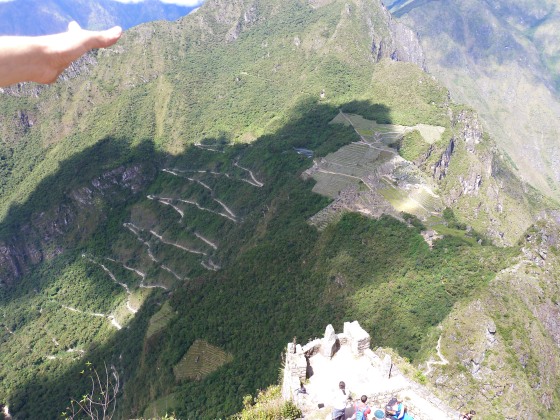
View of ruins at Machu Picchu from the peak of Wayna Picchu – a good shot of the road the bus takes.
The walk down was steep, we descended with confidence, blowing by tentative walkers hanging onto the rock’s edge by their fingernails. After that, a snack and another hour on our own walking through the ruins, we were spent. It was a full day.
Our legs were heavy but the line for the bus down drowned out any fatigue we had. We ran down the trail we had hiked that morning and walked back to town from the trailhead. We covered a lot of ground that day, with big rewards. Very few people see Machu Picchu from every angle. We were lucky, we did.
Back in Aguas Calientes, we enjoyed a well deserved pizza dinner and caught our train. Instead of opting to take the train all the way to Cusco and arrive at 1am, we opted to only go as far as Ollantaytambo. This gave us the opportunity to visit another town in the Sacred Valley, before returning to Cusco in a kamikaze vanpool for $2. Another money saver.
We spent a couple of days back in Cusco, with a day trip to Pisac to visit the market. With our souvenir shopping complete, we flew from Cusco to Lima on the cheap with Peruvian Airlines.
Our two days in Lima were uneventful, especially considering our latest adventure we were still coming down from. Late at night, on the second day, we boarded a flight to Canada. Homeward bound. Our next stop – Vancouver, BC.

